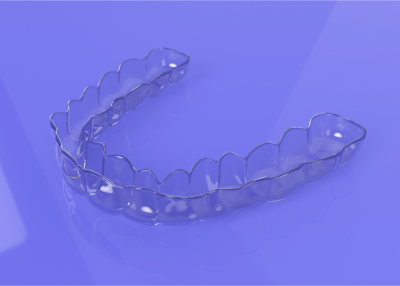Common Orthodontic Problems
The way your teeth align and meet together is known as occlusion. Typically, the upper teeth rest above the lower teeth when your jaw is closed and the top surfaces of the molars line up. However, teeth do not always match up. Malocclusion of the teeth is a misalignment problem that can lead to serious oral health complications.
The following problems all classify as Malocclusion of the teeth.

1. Underbite
An underbite, clinically called prognathism, is the malocclusion or
"bad bite" that happens when lower teeth overlap the upper teeth.
Severity can vary between a mild underbite, where the two rows of teeth almost meet;
and a situation wherein the teeth don't meet at all because the gap is so wide.
It can give the impression you're expressing emotion that isn't intended,
and it is, therefore, a common social issue that many are eager to eliminate for good.
The main cause of an underbite is a misalignment of the lower jaw, which is usually present at birth.
The problems associated with an underbite depend on how pronounced it is. If the gap is wide, it can cause:
Eating difficulties
Challenges with speaking
Chronic jaw or joint (TMJ) pain, as well as head- and earaches
Tooth decay from excessive wear of the tooth enamel
Chronic mouth breathing, halitosis, bacterial infections, sleep apnea, snoring, and other nighttime breathing difficulties.
2. Crossbite:
Is when some of the upper teeth close inside the lower teeth rather than the outside. This can form for a variety of reasons. Although a crossbite can be genetic, reasons such as prolonged use of a pacifier or thumb-sucking, delayed loss of baby teeth, and oversized tonsils or adenoids can be the source of a crossbite. Basically, the upper teeth close inside the lower teeth rather than the outside.

3. Overbite:
It is also called "deep Bite", The upper teeth protrude further than the lower teeth and may completely cover them. Although this can hereditary, an overbite can be caused by a malformed jaw. Underdeveloped lower jaw or an overdeveloped upper jaw can result from the pressure of certain habits children may develop such as thumb-sucking and prolonged bottle-feeding or tongue-thrusting. Chewing on foreign objects can also form an overbite.
4. Overjet:
Overjet although mistaken for an overbite, refers to a horizontal issue while overbites refer to Vertical issues.
Overjet can be genetic, however, in many cases, it is due to childhood habits.
Much like the habits that cause Overbites, these habits include, thumb-sucking, tongue-thrusting, or prolonged bottle or pacifier and can cause the front teeth to splay out over time.
5.Upper Front Teeth Protrusion:
The protrusion of the upper front teeth often is caused by finger and thumb-sucking or tongue thrusting. It is commonly confused with an overbite. The pressure placed on the front teeth causes the teeth to become pushed forward.
Orthodontic treatment can be used to adjust the angle of the teeth and align with the lower teeth of the jaw.
6.Crowding:
Crowded teeth can make it difficult to brush and floss well which makes things easier for plaque, tartar, and other harmful bacteria to build up. This can lead to tooth decay and gum disease.
7. Spacing:
Spacing also called Diastema, refers to gaps or space between teeth which causes the teeth to not fit normally in the jaw. They are most noticeable in the two upper front teeth but can be from anywhere in the mouth. In children, gaps may disappear once their permanent teeth grow in. Some gaps happen to be large and are a cosmetic issue, but some gaps are small and barely noticeable.
Diastema can be caused by multiple factors and can be determined by genetics.
Jaw bone size and teeth size
Some cases include the size of the jaw bone and the size of teeth and results in teeth being spaced too far apart. An overgrowth of the tissue that borders the gum line and the teeth can also result in a gap.
Bad Habits
Bad habits can also be the culprit for spacing. The pressure that thumb-sucking involves can cause the teeth to pull forward.
Gum Disease
This infection damages the gums and tissue with inflammation and can lead to tooth loss and gaps between the teeth. Signs of gum disease include red and swollen gums, bone loss, loose teeth, and bleeding gums.
8. Openbite
An open bite occurs when the upper and lower teeth do not meet when the mouth is closed. When a person closes their jaw, the teeth will have a gap or opening.
What causes an open bite?
It can be passed down by genetics.
The problem normally corrects itself around the age of four and doesn’t persist into adulthood, however, a child may develop an opening in their bite when they have a mix of baby and permanent teeth and too much bone growth. A lisp can develop as well as other speech impediments.
Temporomandibular joint problems may also be the culprit. The Temporomandibular joint (TMJ) is the hinge that allows your mouth to open.
Other causes are prolonged pacifier or thumb-sucking, tongue thrusting ( pushing the teeth with the tongue ). Tongue thrusting happens when you push the tongue through the teeth during swallowing or while speaking
Types of Open bites
Anterior open bite is defined as the front teeth not connecting properly when the back teeth have already made contact the opposite is a posterior open bite, where the back teeth don’t touch when the front teeth are closed.
An open bite can be noticed by the following:
Self-consciousness if your smile isn’t how you would like
A lisp or other speech impediments
Increased wear on the back teeth
Difficulty eating some foods
Treatment
Treating an open bite in early childhood increases the chances of being able to fix an open bite without surgery. Ask your dentist about the options available.
| Age |
Treatment |
| 0-4 |
Tongue thrusting and open bit are normal. No need for intervention.
Restrict thumb sucking and pacifiers. |
| 7-10 |
A tongue crib can be worn if tongue thrusting persists.
A dentist can recognize if adult teeth are coming through in an open bite speech therapy for tongue thrusting can start. |
| 11-17 |
Braces can be fitted to correct an open bite.
Tongue thrusting treatment and therapy will still be successful. |
| 18+ |
Jaw surgery can happen now that growing has finished. Untreated open bites in adults nearly always need surgery.
Options can include braces and Invisalign. Veneers become an option at this age too. |
Open Bite braces will pull teeth back from protruding forward and can place them into proper alignment. The course of treatment can take anywhere from six months to two years and will need to be followed up with retainers. The job of the retainers is to make sure that the teeth do not go back to their old position.

Treatment for tongue thrusting
Tongue therapy:
Exercises for the tongue and therapy can be offered through a speech therapist.
Appliances like a tongue crib:
A bit like a retainer, a tongue cradle or crib attaches to your molars and puts a barrier across your mouth so the tongue can’t push forwards.
If a person stops the habit of tongue thrusting, it will not correct the misalignment, but it will make sure the bite problem won’t get worse or relapse after braces treatment is finished.
9. Dental Midlines not Matched
There are two midlines of the teeth between your two upper front incisors and the second between the two bottom center teeth. These lines should form one straight midline all through the center. When these lines do not line up it is clear to see there is a misalignment with the teeth and jaw or tooth size discrepancy.
How is Malocclusion Diagnosed?
We typically break this down in three phases.
The planning Phase:
Check the mouth and teeth.
ask questions about your child's past health.
X-rays will be taken.
photographs of the face and teeth may be taken.
A plaster model of the teeth may be made.
The Orthodontist will make a diagnosis using the diagnostic tools mentioned above. They will develop a customized treatment and recommend custom devices for the gentle movement of the teeth into proper alignment.
Phase 2: Development/Active Phase
This is the part where you are wearing braces or aligners.
Types of braces that may be used:
Traditional fixed braces: individual dental brackets connected by an archwire.
Lingual braces: These are also fixed but fit on the inside of the teeth to make them less visible.
During this phase, you will need to regularly see your orthodontist. The number of times you need to see your orthodontist will greatly depend on the kind of treatment you're receiving and the attributes of your orthodontic issues.
Phase 3: Retention Phase
A very crucial part of orthodontic care is the retention phase.
When the teeth have been correctly aligned, removable devices and fixed braces will be removed.
Your orthodontist will create retainers for you to wear after your braces are removed.
Retainers prevent your teeth from shifting back to their pre-treatment positions.
Your orthodontist will advise you how long you need to wear your retainers.
How Is a Malocclusion of the Teeth Treated?
Most people with mild malocclusion will not require any treatment. However, your dentist may refer you to an orthodontist if your malocclusion is severe
Depending on your type of malocclusion, your orthodontist may recommend various treatments. These can include:
braces to correct the position of the teeth
removal of teeth to correct overcrowding
reshaping, bonding, or capping of teeth
surgery to reshape or shorten the jaw
wires or plates to stabilize the jaw bone
How Can Malocclusion Be Prevented?
Most cases of Malocclusion are hereditary so preventing it may be difficult.
Early detection of malocclusion will cut down the length and severity of the disorder. Start your child's visits at 12 months old and keep up with regular checkups twice a year. For young children, limit pacifier and bottle use to help reduce changes in the development of the jaw.
An Overview:
The treatment of malocclusion of teeth in children typically results in the correction of the problem. The duration of treatment can be reduced with early treatment in childhood and can also be less expensive. Treating malocclusion early will result in a better outcome and faster.
If you think your child requires dental braces to correct an alignment issue call (973) 742-4200 to schedule an appointment. ( Orthodontics ext: 21 )
Serving Paterson, NJ, and the surrounding communities, we offer comprehensive oral health services ranging from routine cleanings to emergency treatment. We are committed to creating a warm, welcoming environment to keep all members of the family comfortable in the office.
Find reviews and updates on Facebook, learn more about our practice online, or give us a call (973) 742-4200
Written by RP, CRM, SCD























